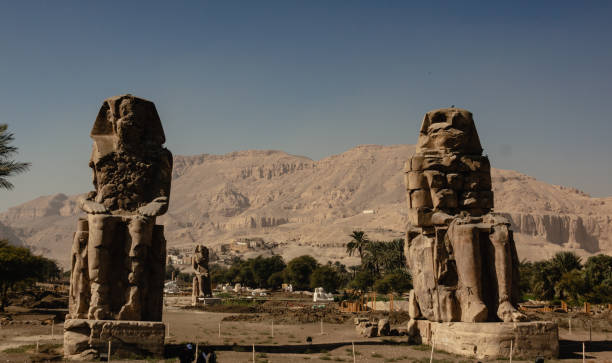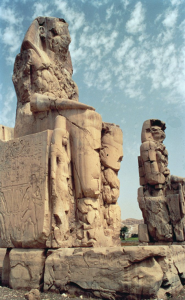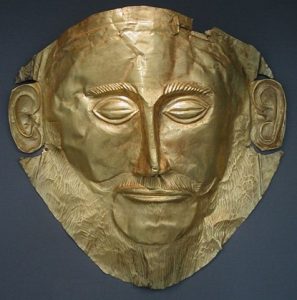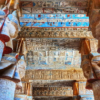The Statues of Memnon
King Amenhotep III established a magnificent funerary temple in the west of Thebes. Unfortunately, a severe earthquake destroyed this temple, leaving only two statues made of quartzite (a type of sandstone that acquires a red color). They were approximately 20 meters tall and were located in front of the temple.
Reason for the Name Memnon
Reason for the Name Memnon An earthquake occurred in 27 BC, causing a crack in the northern statue. The wind at dawn would pass through the cracks, producing a sound like music or weeping. The Greeks, who ruled Egypt at that time, linked this statue to a legend called the Trojan War. The hero Agamemnon participated in the Trojan War but was killed during the siege of Troy. His mother grieved for him and asked the chief god, Zeus, to return her son. He told her that at every dawn, she would hear her son’s voice like birds. Therefore, when the statues produced this sound at dawn, the Greeks believed it was an embodiment of this legend and thus named them the statues of Memnon.
The Fame of the Statues
As a result of the Greeks and Romans’ association with the famous Iliad epic, it became customary for every Roman emperor visiting Egypt to visit these beautiful statues to hear the sound at dawn. One of the most famous of these visits was that of Emperor Hadrian in 130 AD with his wife Sabina. The emperor sat at dawn to hear these sounds. Interestingly, due to the fame of this statue in Rome, a Roman lady (Julia Balbilla), part of Emperor Hadrian’s entourage, wrote verses of poetry on the base of the statue for her brother in Rome. This sound continued until it was repaired during the reign of Emperor Septimius Severus in 200 AD.








